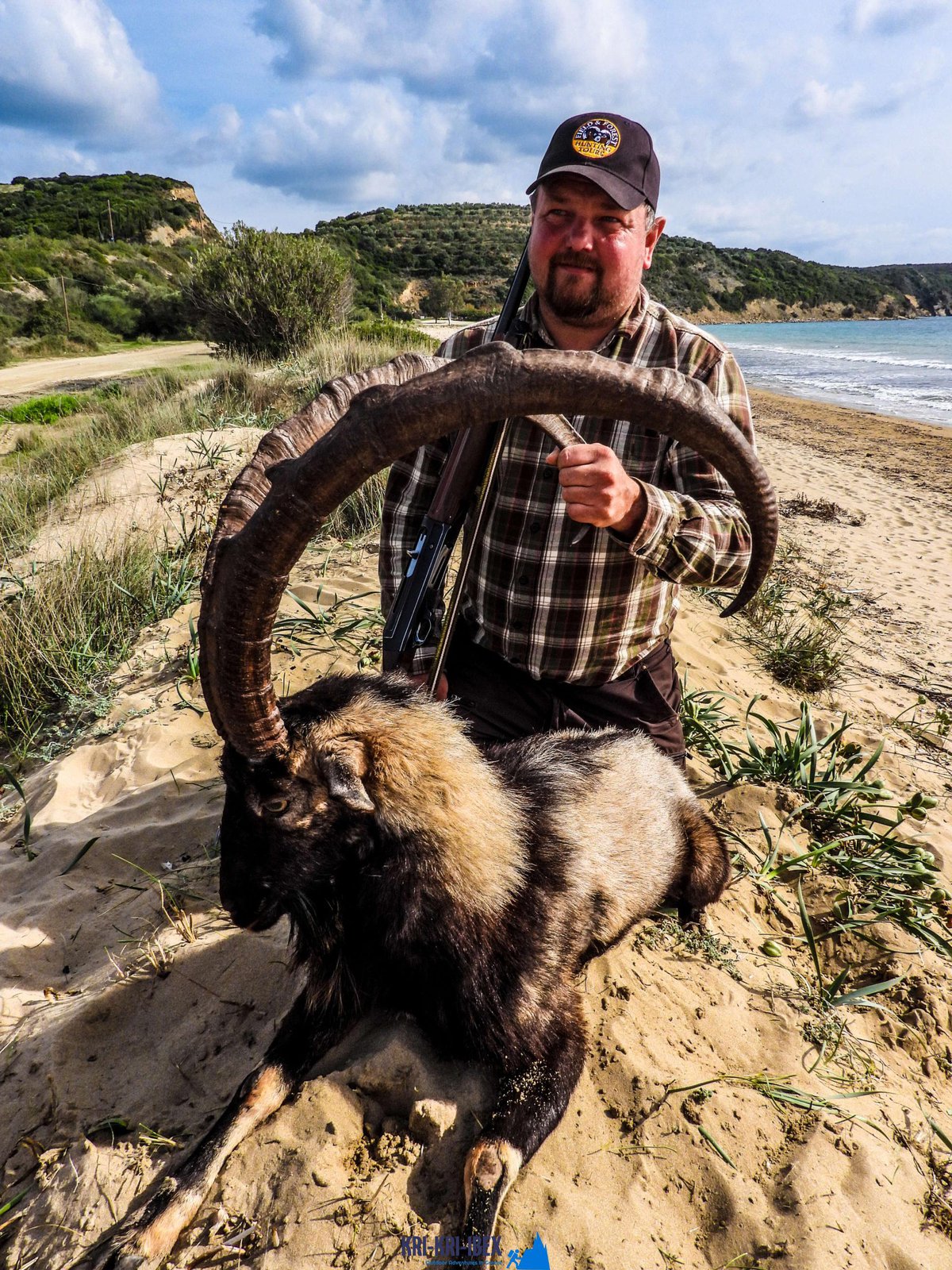Kri kri ibex hunting in Sapientza island, Greece
Kri kri ibex hunting in Sapientza island, Greece
Blog Article

Searching for Kri Kri ibex in Greece is an interesting searching and an incredible vacation expedition all rolled right into one. For a lot of hunters, ibex hunting is a tough endeavor with unpleasant conditions, yet not in this situation! During 5 days of visiting old Greece, diving to shipwrecks, as well as spearing, you'll encounter beautiful Kri Kri ibex on an unique island. What else could you desire?

Pursuing the kri kri ibex in Greece can be a tough undertaking. Searching big video game in Greece is hard for international seekers. Swine and roe deer are the sole alternative for local seekers besides the kri kri ibex, which is only pursued in meticulously safeguarded unique hunting regions such as particular islands. The Kri Kri Ibex as well as mouflon can just be shot on special searching areas from early morning until twelve noon, according to Greek legislation. Slugs are the only ammunition allowed. You need to book at least a year beforehand for a certificate. To make sure that just severe seekers are allowed on these journeys, the Greek Ministry of Nature as well as Agriculture concerns licenses. To guarantee that the government issues a certain number of licenses annually.
When you get here in the Peloponnese peninsula is the strikingly lovely landscape, the very first point you will notice. The hills, forests, rivers, and lakes make this area a nature fan's paradise. There are likewise plenty of opportunities for treking, angling, swimming, and also various other exterior tasks. However the Peloponnese peninsula is not practically its natural elegance; there are likewise countless historical and also social sites to discover. Do not fail to remember also angling, free-diving as well as hunting. Several of one of the most popular traveler destinations in the Peloponnese consist of old Olympia, Epidaurus, Mycenae, as well as Sparta. These locations use a fascinating glance right into Greece's rich background and culture. If you want finding out more regarding Greek mythology, after that you will most definitely intend to go to Mount Olympus, home of the 12 Olympian gods. Naturally, no journey to Greece would be complete without attempting some of the tasty food. The Peloponnese peninsula is home to several of the very best olive oil on the planet as well as feta cheese, olives, honey, and also white wine. Ensure to attempt some of the neighborhood specializeds such as dolma (packed grape leaves), Souvlaki (grilled meat skewers), and Gyro (meat covered in pita bread).
If you're trying to find an authentic Greek experience, then look no more than our outdoor searching in Greece with angling, and totally free diving excursions of Peloponnese. This is a memorable means to see whatever that this incredible region has to provide. Book your tour today!
What is the diference between Kri Kri ibex, Bezoar ibex and hybrid ibex
The kri-kri is not thought to be indigenous to Crete, most likely having been imported to the island during the time of the Minoan civilization. Nevertheless, it is found nowhere else and is therefore endemic to Crete. It was common throughout the Aegean but the peaks of the 8,000 ft (2,400 m) White Mountains of Western Crete are their last strongholds–particularly a series of almost vertical 3,000 ft (900 m) cliffs called ‘the Untrodden’—at the head of the Samaria Gorge. This mountain range, which hosts another 14 endemic animal species, is protected as a UNESCO Biosphere Reserve. In total, their range extends to the White Mountains, the Samaria National Forest and the islets of Dia, Thodorou, and Agii Pandes.
This Ibex is NOT a diminutive form of the Bezoar Ibex, which has migrated into the western-most reach of the range of this species. The kri – kri (Capra aegagrus cretica), sometimes called the Cretan goat, Agrimi, or Cretan Ibex, is a feral goat inhabiting the Eastern Mediterranean, previously considered a subspecies of wild goat. The kri-kri has a light brownish coat with a darker band around its neck. It has two horns that sweep back from the head. In the wild they are shy and avoid tourists, resting during the day. The animal can leap some distance or climb seemingly sheer cliffs.
“The agrimi goat Capra aegagrus cretica is unique to Crete and its offshore islands. It has been identi®ed as a sub-species of the wild bezoar goat Capra aegagrus aegagrus Erxleben, 1777, which it closely resembles in horn shape, body form and coloration. This classi®cation has been disputed by some researchers who claim that the agrimi are feral goats, derived from early domestic stock brought to the island by the ®rst Neolithic settlers. In order to clarify this issue, DNA analyses (cytochrome b and D loop sequences) were carried out on tissue of live and skeletonized agrimi and compared to sequences of wild and domestic caprines. Results conclusively show the agrimi to be a feral animal, that clades with domestic goats (Capra hircus) rather than with wild Asiatic bezoar. This study demonstrates that morphometric criteria do not necessarily re¯ect genetic af®nities, and that the taxonomic classi®cation of agrimi should be revised.”
Report this page